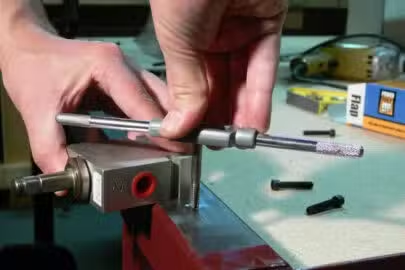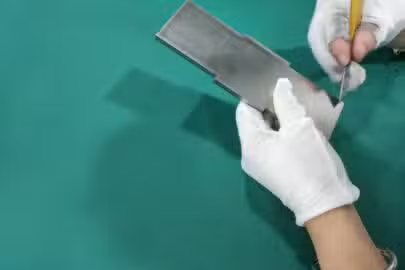CNC machining is a quick manufacturing method that removes selective material to convert digital 3D drawings into plastic or metal pieces. Many businesses use CNC machining services to create parts and prototypes, and many industries use adaptable technology.
However, CNC machining takes several shapes. Although all CNC machining technologies have a similar process, the software converts the digital design into machine instructions, instructing the CNC machine to cut material, and the hardware used to cut material varies substantially between machines.
This article compares and contrasts two machines: CNC mills and CNC turning. We will also mention the main features of CNC milling and turning, as well as the key benefits of each technology and a selection of common products that businesses may create using each technique.
What Is CNC Milling?
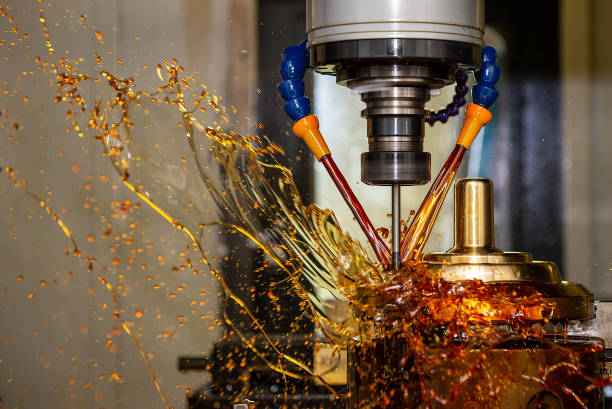
The fundamentals of CNC milling involve the use of computer software to automate and control milling gear. It combines several operations, such as face, angular, or plain milling, to create precise components from acceptable materials.
A CNC mill is made up of a vertical spindle and a revolving head with a rotary cutter that is fed to the workpiece. The mill keeps the workpiece fixed on the machine bed during CNC milling operations. The rotating multi-point cutting tools are then fed to the workpiece’s surface in a controlled configuration to gradually remove surplus materials until practically any desired shape is created.
Furthermore, CNC mills come in a variety of configurations. They include mills with three, four, or five axes. The typical 3-axis CNC mill controls the cutting tool in three directions – X, Y, and Z – whereas the current 5-axis CNC milling machine allows the cutting tool to move up to five directions.
It is worth noting that the more cutting angles or axes there are, the greater the dimension of freedom, allowing CNC mills to produce unique components with complicated geometry and precise features. As a result of its versatile characteristics, the 5-axis CNC machining is more expensive, impacting the final cost of intricate milled components.
What Is CNC Turning?
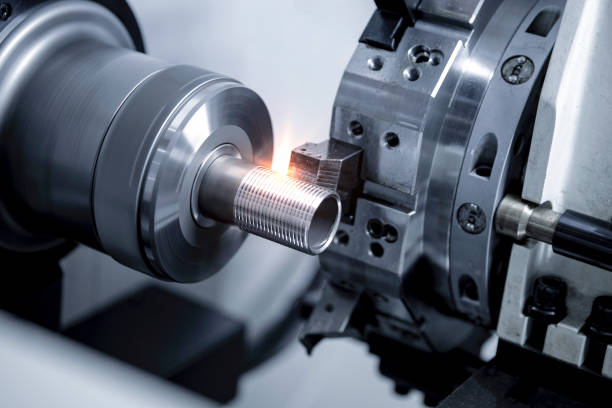
Turning is a common CNC machining process. The fundamentals of CNC turning include mounting suitable materials in a revolving chuck. Simultaneously, the cutting tools fed to the workpiece remove material until the required shape is achieved. CNC lathes or turning centers are commonly used in turning activities.
Manufacturers used to operate lathes by hand before computer programs, which made them more labor-intensive. Thus, the new Computer Numerical Control (CNC) advancement uses pre-programmed software to automate numerous processes on suitable workpieces. Drilling, boring, grooving, parting, facing, knurling, and other processes are examples.
A CNC lathe is made up of a chuck and a variety of cutting tools. Before utilizing the machine, the machinist must select the feed rate, cutter’s speed, depth, and other key parameters to produce the appropriate shape component automatically. During turning operations, the chuck assists in holding the workpiece in position while cutting tools attached to a turret move toward the spinning workpiece to remove excess material as needed.
Most manufacturers utilize CNC lathes with only one turret and apply appropriate cutting tools individually to complete several projects on one side. In other circumstances, some professionals use turning centers with a main spindle and a sub-spindle for faster operations. The material is machined moderately by the main spindle in this setup. It is then sent to the sub-spindle to complete the task on the opposite side of the desired component.
CNC Milling Vs. CNC Turning: What Are Their Differences?
The movement of the part and the cutting tool is the essential distinction between CNC milling and CNC turning. The workpiece spins or rotates at a predetermined speed in CNC turning processes while the cutter remains stationary. CNC milling, on the other hand, entails keeping the workpiece in place while the cutting tool spins around it to remove extra material.
To put it briefly, this variance in cutting tool or workpiece movement reflects the disparities in dimensions and forms that each machining method is best suited to produce. Here are other notable differences between CNC turning and milling:
| Features | CNC milling | CNC turning |
| Operations | Plain milling, angular milling, and face milling | Taper threading external grooving, knurling, boring, threading, and drilling |
| Suitable materials | Metal, wood, plastic, and composites, plastic, wood, and metal | Plastic, wood or metal. |
| Function mechanism | A rotating cutting tool that moves linearly removes material from a stationary workpiece. | A rotating cutting tool that moves linearly removes material from a stationary workpiece. |
| Shapes produced | Shapes that are both symmetrical and non-symmetrical. | Shapes like cones, cylinders, discs, polygons, and hexagons are created using axis symmetry. |
What Are the Advantages of CNC Milling?
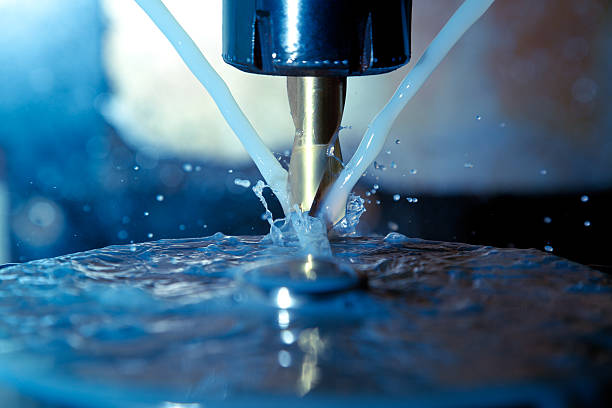
CNC mills provide several benefits to manufacturers and prototype firms. Mills, as opposed to lathes, are versatile equipment capable of producing a variety of shapes. Furthermore, different cutting tools can be employed for various processes like roughing and end-milling.
Mills are essential for post-machining even though they are production machinery CNC in their own right. They can, for example, be used to add details to turned, molded, or 3D-printed parts.
CNC milling is also fast, repeatable, and economical in low volumes, partly due to the lack of tooling. As a result, it can be found among manufacturing and rapid prototyping services.
What Are the Advantages of CNC Turning?
The capacity to produce round profiles is the most significant advantage of CNC turning. It is far more difficult to attain precise roundness when using other CNC machining services, such as CNC milling or routing.
CNC turning is also incredibly exact, making it a vital technique for boring holes with precise dimensions and defined tolerances.
CNC milling and CNC turning can be coupled to reap the benefits of both techniques. In most situations, CNC turning is performed first, allowing the machinist to mill additional (asymmetrical) details on the workpiece.
CNC Mill Vs.CNC Turning – Applications In Custom Part Fabrication

CNC mills and lathes are used in various machining activities across multiple sectors today. Electrical, woodworking and metalworking, automotive, medical, aerospace, and motorcycling sectors are among them. Check out the following examples of CNC mills and CNC lathes in custom part fabrication:
Examples of Parts made with CNC Milling
Here are different examples of parts produced with CNC milling:
- Water Pumps: Multi-axis CNC milling machines may produce dependable impellers for hydraulic systems.
- Enclosures and Housings: Custom-milled enclosures can protect internal components in electrical gadgets and other products.
- Gears: Straight and spiral gears for mechanical devices can be produced using CNC milling.
- Fittings: Milled fittings join two or more pieces together.
- Mold Tooling: Made of steel or aluminum, milled tooling provides for quick prototyping of molded items.
- Forming Punches: CNC mills can produce different types of manufacturing equipment, such as sheet metal forming punches.
- Engine Parts: CNC milling is used by automotive engineers for engine blocks and other parts.
- Medical Devices: Implants, surgical equipment, and other medical items can be manufactured using CNC miller.
- Brackets: Milled brackets can have unique threads and holes and are more complicated than sheet metal brackets.
- Water pumps: Multi-axis mills can create reliable impellers for hydraulic equipment
Examples of Parts Made With CNC Turning
Here are different examples of parts produced with CNC turning:
- Shafts: Shafts with rounded profiles are ideal for CNC turning.
- Turbines: CNC turning can manufacture round turbine blades for the energy business.
- Flanges: CNC-turned flanges can reinforce beams and pipes.
- Ball joints: CNC turning is perfect for circular connecting devices such as ball joints.
- Rollers: CNC lathes may produce rollers with tight tolerances for industrial applications.
- Nozzles: Nozzles are typically cylindrical or conical in shape, having hollow interiors that make them appropriate for CNC turning machine.
- Firearms: The tubular shape necessary for a weapon barrel can be produced by a CNC lathe.
- Bolts and Nuts: Turning’s accuracy suits it for tolerance-critical components such as nuts and bolts.
CNC Milling vs. CNC Turning: When Should You Use Which?
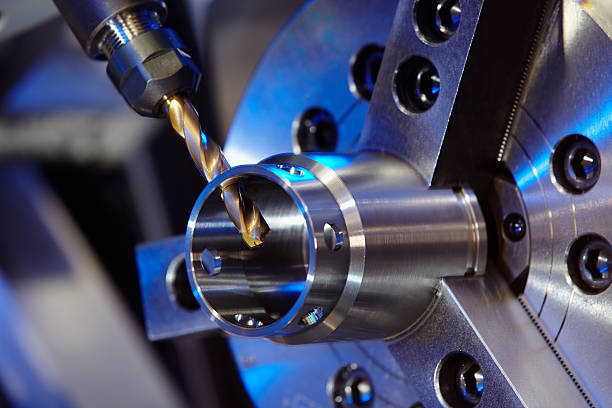
Even though CNC machines provide several benefits, businesses must consider the design requirements before deciding on the CNC machining operation that is most suited for each production project. If you are unsure, a skilled machinist may assist you in selecting the best CNC machining procedure for your manufacturing job. Here are some helpful hints to help you choose the best machining process:
When to Use CNC Milling?
CNC milling involves rotating cutting tools to remove material from a stationary workpiece. As a result, specialists frequently use CNC milling for manufacturing projects that do not necessitate cylindrical components. That being stated, CNC milling can machine flat or uneven surfaces. Furthermore, CNC milling is ideal for secondary finishing procedures because of its well-defined design features.
When to Choose CNC Turning?
CNC turning entails rotating the workpiece as the cutting tool makes contact to remove extra material. As a result, professional machinists prefer CNC turning for manufacturing jobs that require cylindrical or round shapes. Furthermore, the high-speed rotation and broad material compatibility of CNC turning operations make it ideal for large-scale manufacture of tubular parts.
Need CNC Milling Vs. CNC Turning: Zintilon Can Handle Both Of Them
CNC turning is commonly used for parts with round characteristics, but CNC milling is better suited for parts of different shapes. If you’re unsure about which technique to use, Zintilon’s machining professionals can assist you in selecting the best CNC machining service for your project.
Furthermore, CNC milling and turning can be combined to achieve the greatest results in specific circumstances. So, whether your project involves turning or milling, we can meet all your needs to a high standard thanks to our significant machining knowledge. Please request a price today and speak with one of our engineers about the specifics.
Conclusion
CNC machines have become popular in many manufacturing organizations. These computerized machines use pre-programmed software to automate machining operations, making most production processes more efficient, faster, and precise.
CNC milling and turning continue to be the most popular CNC production procedures. Despite some CNC similarities, there is much more to their milling methods than meets the eye. Thus, this article investigates the distinctions between CNC turning and milling, as well as their applications in the fabrication of unique components.
FAQs
What Are the Similarities Between Milling and Turning?
Here are the similarities between milling and turning:
- CNC milling and turning to automate and control machine tools using computer technology. As a result, they both minimize human errors to deliver a low volume of high-quality items in a short period.
- Both approaches rely on subtractive manufacturing methods.
- Both machining procedures generate heat and frequently require fluids to mitigate the heat.
- Milling and turning operations can be performed on workpieces made of aluminum, titanium, steel, copper, and various thermoplastics.
Is Milling Cheaper Than Turning?
Producers generally fabricate turned items at a substantially cheaper cost than milled components. This is because CNC lathes processes enable the effective manufacture of several pieces in a short period, hence minimizing additional expenses incurred due to manufacturing faults.
Which Is Better? A Mill or lathe?
Your manufacturing project primarily determines this. Because of its increased production efficiency and performance, a CNC lathe is best suited for continuously manufacturing cylindrical components. When applying finishing elements to a custom-designed component, a CNC mill outperforms a lathe.



